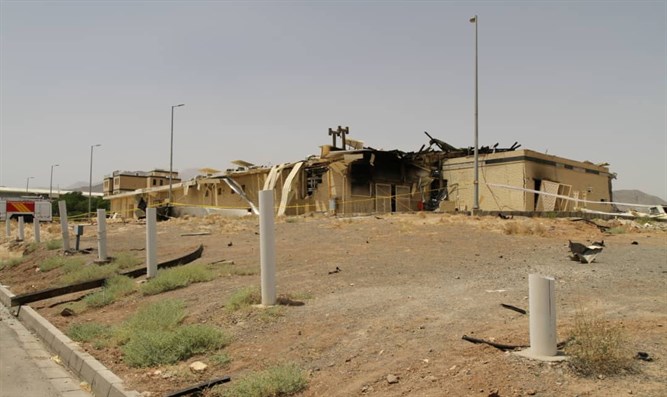Following explosion at Natanz facility in July, regime vowed to rebuild “in the heart of the mountains.”
No one has any doubt that the Iranian nuclear effort continues, despite continued setbacks such as two significant events this year, both attributed to “enemy sabotage” by the Iranian regime – the destruction of the centrifuge assembly hall at the Natanz nuclear facility in July; and the assassination of nuclear scientist Mohsen Fakhrizadeh a few weeks ago.
Iran responded with typical defiance following Fakhrizadeh’s killing, passing legislation for the increasing of uranium enrichment, barring of international inspectors from nuclear sites, and installing of advanced centrifuges at those sites, if the United States does not agree to lift its sanctions on the Islamic state.
Its response to the explosion back in July, however, has recently become the subject of some interest, with new satellite imagery suggesting that Iran is already making good on a vow it made in the aftermath, that it would rebuild “in the heart of the mountains.”
Pictures obtained by The New York Times Visual Investigations team show what are thought to be newly built entrances to tunnels under a ridge in a mountain south of Natanz, around 140 miles south of the capital, Tehran.
The Times asked Jeffrey Lewis, an expert in arms control at Middlebury Institute of International Studies at Monterey, to comment on the images.
“The new facility is likely to be a far more secure location for centrifuge assembly,” Lewis responded. “It is located far from a road and the ridge offers significant overburden that would protect the facility from air attack.”
After studying the satellite pictures, Lewis noted that, “There are what appear to be two tunnel entrances on either side of a large ridge, with a pile of spoil from excavation nearby. The space between the two entrances is large enough to accommodate a facility about the same size as the centrifuge assembly building that was destroyed this summer and that Iran indicated it was rebuilding in the mountains.
“The major clue is the pile of spoil from the excavation that was not present in July,” he added. “Iran also regraded a pair of roads on each side of the ridge leading to what appear to be tunnel entrances.”
Allison Puccioni, an imagery analyst affiliated with the Center for International Security and Cooperation at Stanford University, pointed to other suspicious signs of excavation near the debris pile such as “trails of excavated earth, lighter in color than the existing hard-packed road.”
It has been known for months that something is going on around Natanz, with new roads under construction and evidence of ongoing excavations. With advances in satellite and other intelligence technology, keeping such projects secret is very difficult, but, undaunted, the Iranians just keep digging.
(Arutz 7).






